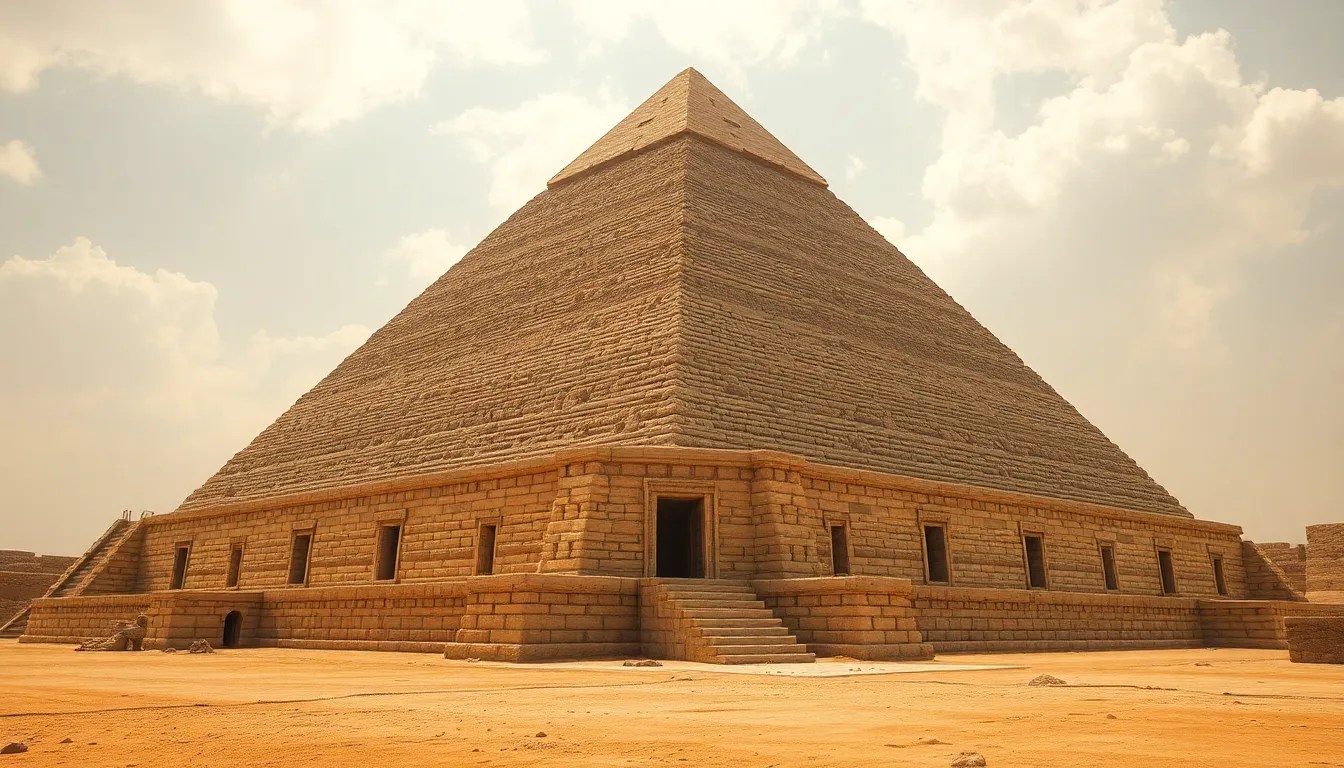The Pyramid’s Alignment: How Ancient Egyptians Tapped into Cosmic Forces
I. Introduction
The Great Pyramids of Giza stand as monumental testaments to the engineering prowess and spiritual aspirations of ancient Egypt. These architectural marvels, particularly the Great Pyramid, have long captivated the imagination of historians, archaeologists, and the public alike. The alignment of these structures is not merely a feat of engineering; it reflects a profound understanding of cosmic forces that influenced ancient Egyptian architecture.
This article delves into the significance of alignment in pyramid construction, exploring the celestial navigation techniques employed by the ancient Egyptians and the spiritual symbolism behind these alignments.
II. Historical Context of Pyramid Construction
The era of pyramid building, primarily during the Old Kingdom period (c. 2686–2181 BCE), marked a significant advancement in ancient Egyptian civilization. Pharaohs such as Khufu, Khafre, and Menkaure commissioned the construction of the Great Pyramid and its companions, seeking to secure their legacies in the afterlife.
- Khufu: The pharaoh responsible for the Great Pyramid, also known as the Pyramid of Cheops.
- Khafre: Khufu’s son, who built the second pyramid and is often associated with the Sphinx.
- Menkaure: The builder of the third and smallest of the Giza pyramids.
These monumental structures were built with the belief that the afterlife was a continuation of life on Earth, and the alignment of the pyramids with celestial bodies played a crucial role in this belief system. The ancient Egyptians perceived a deep connection between their earthly existence and the cosmos.
III. The Science of Astronomical Alignment
The ancient Egyptians were skilled astronomers and navigators, using celestial bodies to guide their architectural endeavors. Their understanding of the cosmos was integral to their culture.
- Key Celestial Bodies: The Egyptians closely observed the sun, moon, and stars, particularly the North Star (Polaris) and the constellation Orion, believed to be associated with Osiris, the god of the afterlife.
- Celestial Phenomena: Events such as solstices and equinoxes were significant in marking time and guiding agricultural practices.
To achieve precise alignments, the Egyptians employed several methods, including:
- Using the sun’s shadow to determine cardinal directions.
- Aligning structures with the stars by sighting along specific lines of sight.
- Utilizing simple tools such as plumb bobs and leveling instruments.
IV. The Great Pyramid: A Case Study in Cosmic Alignment
The Great Pyramid of Giza, the largest of the three, was constructed with remarkable precision. Its dimensions and orientation reveal a careful consideration of cosmic alignment:
- Dimensions: Originally standing at 146.6 meters, the Great Pyramid was the tallest man-made structure in the world for over 3,800 years.
- Orientation: The sides of the pyramid are aligned with the cardinal points—north, south, east, and west—with an accuracy that suggests advanced surveying techniques.
Comparative studies of other pyramids, such as those at Saqqara and Dashur, show varying degrees of alignment precision, yet none match the Great Pyramid’s meticulous orientation. Theories suggest its alignment may be related to the North Star and significant stars in the constellation Orion, reinforcing the connection between the pharaohs and the divine.
V. Symbolism of the Pyramid’s Orientation
The orientation of the pyramids held profound spiritual and religious significance. The ancient Egyptians believed that aligning their tombs with celestial bodies facilitated the pharaoh’s journey to the afterlife.
- Spiritual Significance: The pyramids were seen as gateways to the heavens, allowing the deceased to ascend and join the gods.
- Connections to Deities: Many alignments corresponded with the positions of gods, emphasizing the divine nature of the pharaoh’s role.
In Egyptian mythology, the pyramids served as physical manifestations of the connection between the earth and the cosmos, anchoring the pharaoh’s soul in the afterlife while simultaneously reaching for the divine.
VI. Modern Interpretations and Discoveries
Recent archaeological findings have shed new light on the methods and significance of pyramid alignment. Advances in technology, such as satellite imaging and 3D mapping, allow researchers to explore these ancient structures in unprecedented detail.
- Recent Discoveries: Excavations at Giza have uncovered additional structures that suggest a complex relationship between the pyramids and their surroundings.
- Technological Advances: The use of LiDAR and other imaging techniques has revealed hidden chambers and previously unnoticed alignments.
Contemporary theories continue to evolve, highlighting the sophistication of ancient Egyptian engineering and their understanding of cosmic forces. Scholars are increasingly recognizing the pyramids not just as tombs but as integral parts of a broader cosmological framework.
VII. Cultural Impact and Legacy
The influence of pyramid alignment extends beyond ancient Egypt, impacting later civilizations and cultures. The precision of the pyramids inspired awe and reverence, leading to their adoption in various architectural forms worldwide.
- Influence on Later Civilizations: The alignment techniques used in pyramid construction inspired architects and builders in cultures such as the Maya and Inca.
- Enduring Fascination: The pyramids remain a symbol of mystery and intrigue, attracting millions of visitors and scholars each year.
As modern research continues to unveil the secrets of these ancient structures, our understanding of the Egyptians’ architectural and astronomical achievements grows richer, showcasing a civilization deeply connected to the cosmos.
VIII. Conclusion
The significance of cosmic alignment in the construction of the pyramids is a testament to the ancient Egyptians’ advanced knowledge and spiritual beliefs. These structures, aligned with celestial bodies, served not only as tombs but as gateways to the divine, embodying the intersection of architecture and astronomy.
The enduring mystery and allure of ancient Egyptian engineering inspire ongoing exploration and research, inviting us to further investigate the profound connections between the cosmos and human endeavors across cultures and time.




